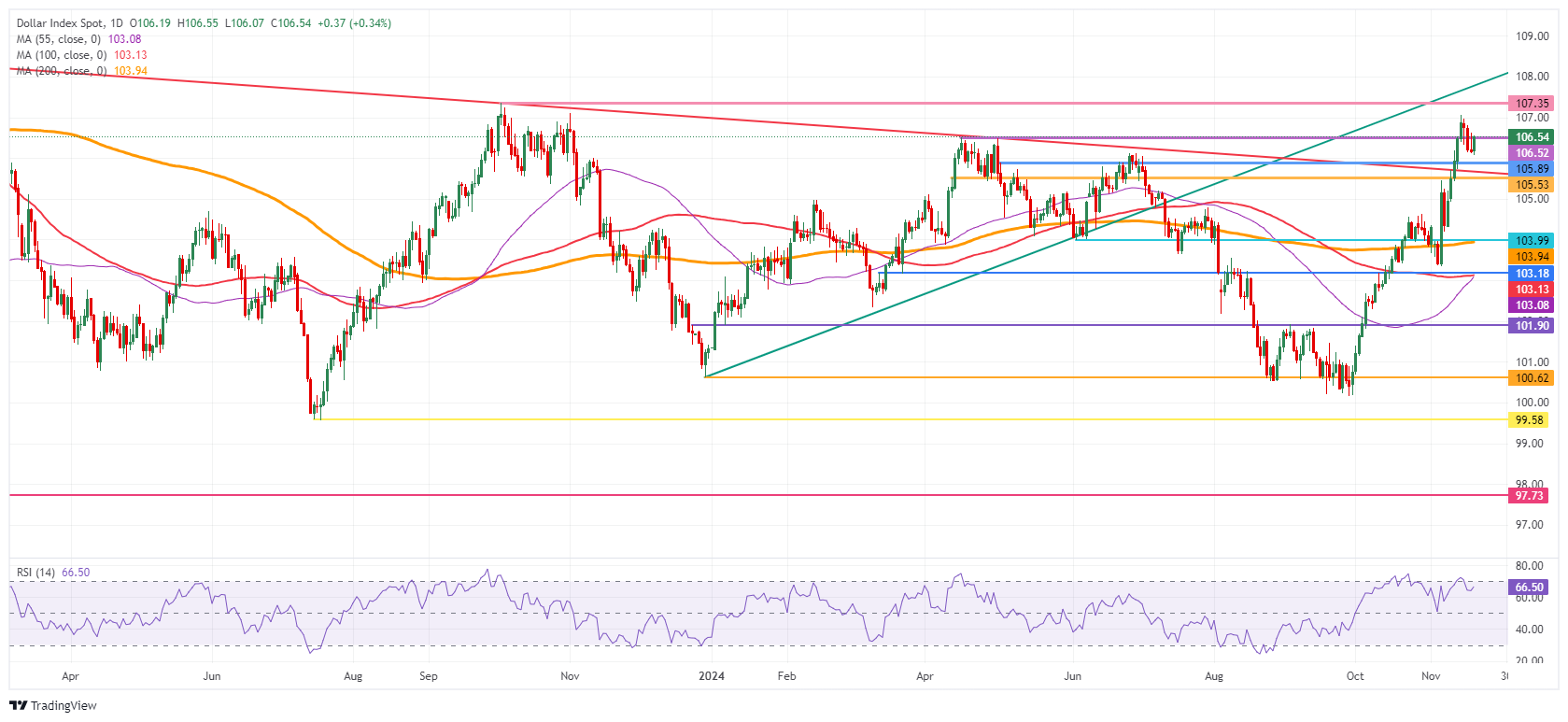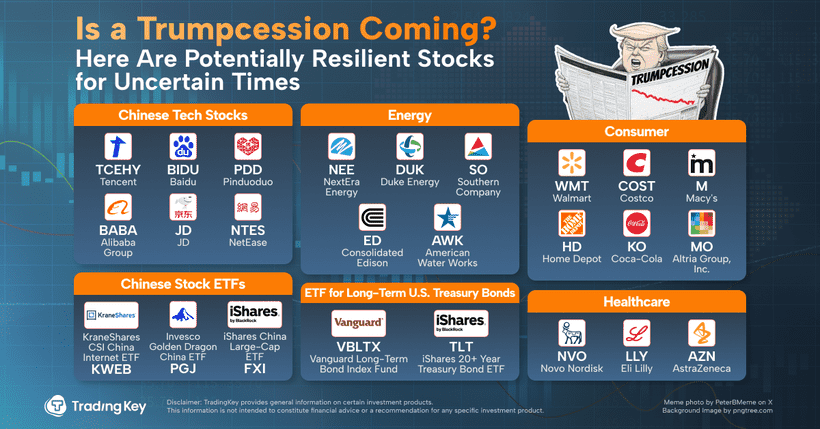US Dollar ticks up as markets brace for Nvidia earnings

- The US Dollar recovers after after a volatile Tuesday.
- Markets are favoring risk-on ahead of the much anticipated Nvidia earnings.
- The US Dollar index trades up in the 106.50 area, still looking for support to bounce off from.
The US Dollar (USD) recovers on Wednesday, with the DXY Index trading around 106.5, as market sentiment turns risk-on ahead of the Nvidia earnings release after the US closing bell. Overnight in the US session, markets reversed the initial concerns about the escalated situation between Russia and Ukraine after Russian President Vladimir Putin said he is open to a peace deal brokered by President-elect Donald Trump.
The US economic calendar is still rather empty on Wednesday, except for the weekly Mortgage Applications data. The focus shifts to the Federal Reserve (Fed), with four Fed speakers set to release comments for the markets. That December interest-rate cut remains in limbo, with traders unsure whether the Fed will stick to its previous commitment to cutting rates in December again.
Daily digest market movers: Calm down
- Geopolitical headlines on Ukraine and Russia point to an easing of tensions after Russian President Vladimir Putin confirmed that he would be open to a ceasefire discussion with President-elect Donald Trump, Reuters reports.
- At 12:00 GMT, the Mortgage Bankers Association (MBA) released the weekly Mortgage Applications. This week’s number came in at 1.7% against last week’s numbers, which was an increase of 0.5%.
- Near 15:00 GMT, Federal Reserve Vice Chair for Supervision Michael Barr testifies about the oversight of prudential regulators before the House Financial Services Committee in Washington DC.
- Federal Reserve Governor Lisa Cook delivers a speech about the US economic outlook and monetary policy at the University of Virginia Department of Economics in Charlottesville, Virginia at 16:00 GMT.
- Near 17:15 GMT, Federal Reserve Governor Michelle Bowman delivers a speech about "approach to agency policymaking" at the Forum Club of the Palm Beaches in West Palm Beach, Florida.
- Federal Reserve Bank of Boston President Susan Collins delivers remarks and participates in a conversation at an event organized by the Ford School in Ann Arbor, Michigan at 21:00 GMT.
- Equities have shrugged off the drag of the geopolitical headlines from Tuesday and are in positive spirits ahead of the Nvidia earnings release after the US closing bell. European stocks are up with US equity futures following suit.
- The CME FedWatch Tool is pricing in another 25 basis points (bps) rate cut by the Fed at the December 18 meeting by 59.1%. A 40.9% chance is for rates to remain unchanged. While the rate-cut scenario is the most probable, traders have significantly pared back some of the rate-cut bets compared with a week ago.
- The US 10-year benchmark rate trades at 4.42%, sliding further away from the high printed on Friday at 4.50%.
US Dollar Index Technical Analysis: Easing down
The US Dollar Index (DXY) edges up slightly in the mid-106.00 region on the daily chart. Markets have let the dust settle on the geopolitical headlines from Tuesday and are eagerly awaiting the Nvidia earnings later this Wednesday. As Trump trade is starting to unwind, the DXY might need to look for lower support in order to attract buyers.
After a brief test and a firm rejection last Thursday, the 107.00 round level remains in play. A fresh yearly high has already been reached at 107.07, which is the static level to beat. Further up, a fresh two-year high could be reached if 107.35 is broken.
On the downside, a fresh set of support is coming live. The first level is 105.93, the closing from November 12. A touch lower, the pivotal 105.53 (April 11 high) should avoid any downturns towards 104.00.

US Dollar Index: Daily Chart
US Dollar FAQs
The US Dollar (USD) is the official currency of the United States of America, and the ‘de facto’ currency of a significant number of other countries where it is found in circulation alongside local notes. It is the most heavily traded currency in the world, accounting for over 88% of all global foreign exchange turnover, or an average of $6.6 trillion in transactions per day, according to data from 2022. Following the second world war, the USD took over from the British Pound as the world’s reserve currency. For most of its history, the US Dollar was backed by Gold, until the Bretton Woods Agreement in 1971 when the Gold Standard went away.
The most important single factor impacting on the value of the US Dollar is monetary policy, which is shaped by the Federal Reserve (Fed). The Fed has two mandates: to achieve price stability (control inflation) and foster full employment. Its primary tool to achieve these two goals is by adjusting interest rates. When prices are rising too quickly and inflation is above the Fed’s 2% target, the Fed will raise rates, which helps the USD value. When inflation falls below 2% or the Unemployment Rate is too high, the Fed may lower interest rates, which weighs on the Greenback.
In extreme situations, the Federal Reserve can also print more Dollars and enact quantitative easing (QE). QE is the process by which the Fed substantially increases the flow of credit in a stuck financial system. It is a non-standard policy measure used when credit has dried up because banks will not lend to each other (out of the fear of counterparty default). It is a last resort when simply lowering interest rates is unlikely to achieve the necessary result. It was the Fed’s weapon of choice to combat the credit crunch that occurred during the Great Financial Crisis in 2008. It involves the Fed printing more Dollars and using them to buy US government bonds predominantly from financial institutions. QE usually leads to a weaker US Dollar.
Quantitative tightening (QT) is the reverse process whereby the Federal Reserve stops buying bonds from financial institutions and does not reinvest the principal from the bonds it holds maturing in new purchases. It is usually positive for the US Dollar.




